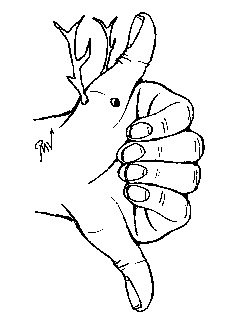Opinion: Bloody solution

Matt Vroom
October 28, 2004
This Saturday, deer hunting will begin at Robert Allerton Park, a University-owned park in Monticello. The reason for the hunt is to address the overpopulation of white-tailed deer, which University officials claim are eating and destroying oak seedlings, local crops, ornamental plants and man-made gardens. However, we do not agree that deer hunting is the best way to control the deer population.
A recent survey by University biologists puts the deer count at 163 per square mile. Most biologists say the park’s delicate ecosystem can only withstand 20 deer per square mile. This overpopulation creates the potential for quick outbreaks of disease within the deer herd and increases the risk of motor-vehicle accidents. In response, the University has decided to address the problem by experimenting with bow-and-arrow hunting.
According to the Fund for Animals, an animal rights organization, “Bowhunting is one of the cruelest forms of hunting, because primitive archery equipment wounds more animals than it kills. Dozens of scientific studies indicate that bowhunting yields more than a 50 percent crippling rate.”
However, the University claims that hunters will be expected to track down and kill any wounded deer. To hold them accountable, hunters must write their names on each arrow they use. But how will park officials monitor and enforce these rules? Finding a wounded deer is difficult. Most of these arrows only will be recovered if the deer suffers and dies from its wounds.
What’s more, allowing hunting in Allerton promotes a sport we strongly disagree with. The University says that bow-and-arrow hunting – rather than sharpshooting – is primarily the result of safety concerns. Yet, critics allege that the use of bow and arrows is the result of the Monticello hunter’s community, which expressed a preference for bow-and-arrow hunting.
Get The Daily Illini in your inbox!
Some argue that hunters typically shoot deer that otherwise might starve, but many hunters look for the strongest and healthiest animals as trophies. And although the University will require that one dead doe must be brought back to a checkpoint for every buck killed, allowing hunters to kill bucks only confirms that sport is the main incentive for the hunt. Let’s face it, the hunters allowed into Allerton are hunting for sport, not out of some ethical duty they feel to protect wildlife. If that really were the case, most of them wouldn’t be applying for pairs of two or four hunting licenses.
Ultimately, the deer population does pose a problem for Allerton, a living laboratory the University has committed to protect. But we refuse to believe all other options have been exhausted. There must be cleaner ways to perform the kill or avoid the slaughter, such as sterilization or relocation of the deer. Because the problem won’t go away through two months of hunting, the University needs to look into a more long-term and less-bloody solution.






